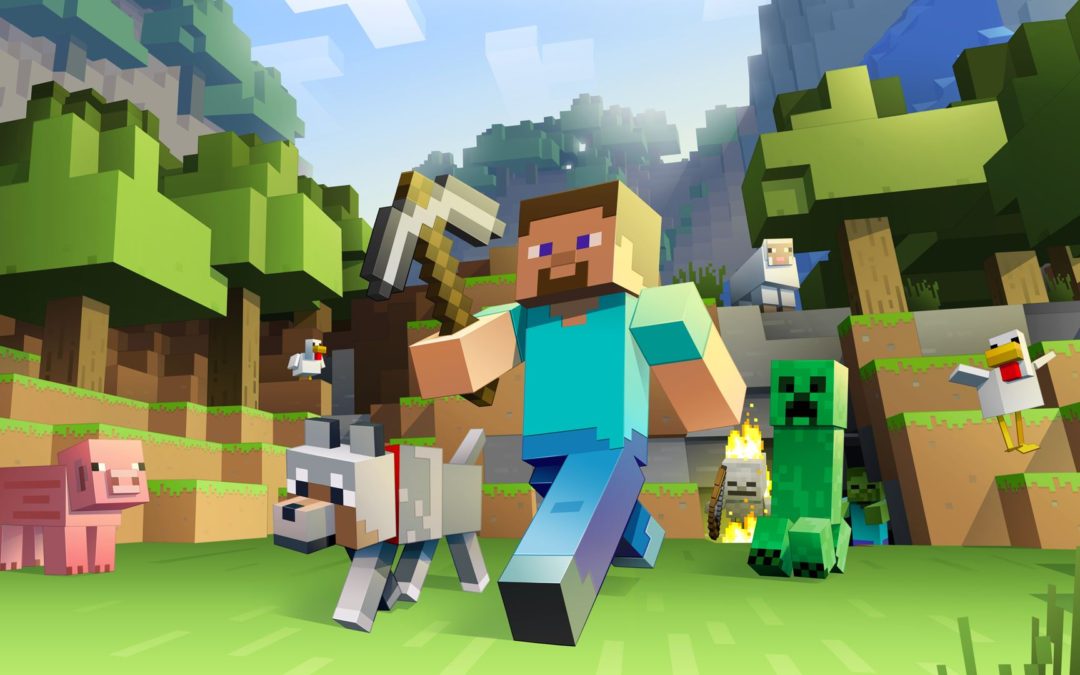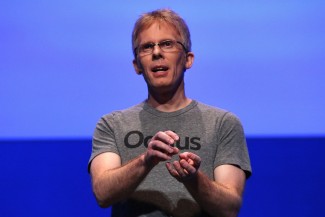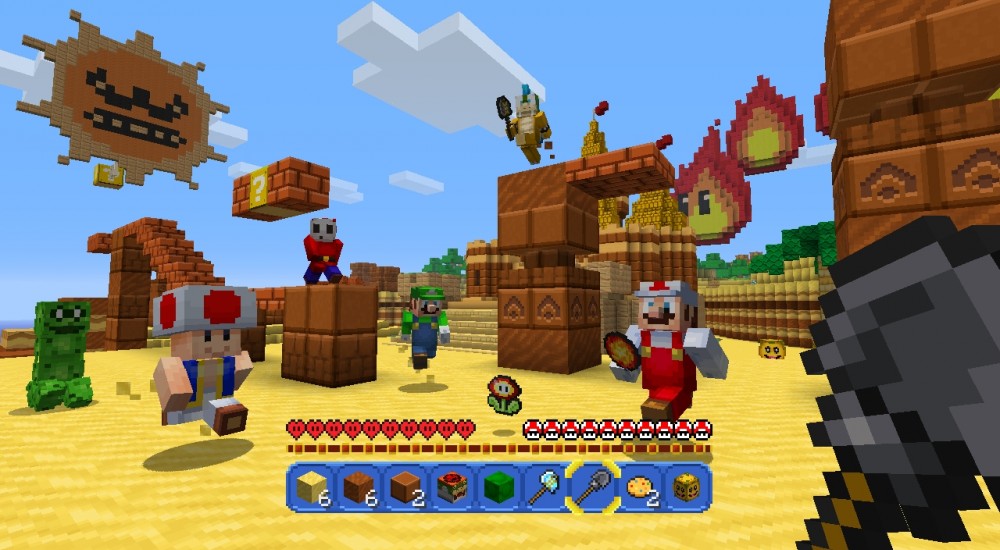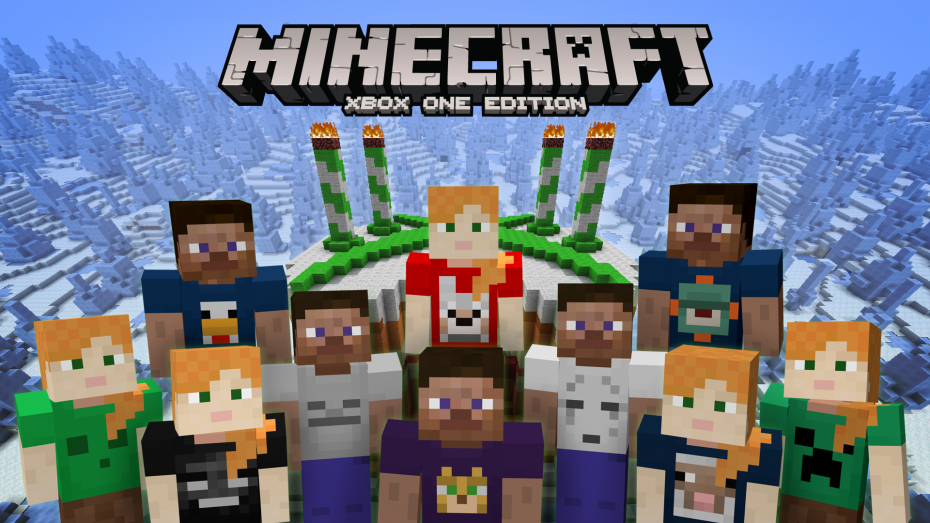
by Stone Marshall | May 19, 2016 | Minecraft News |
Minecraft on the Xbox hit an anniversary, and Microsoft wants to give you a gift to celebrate.
The Xbox 360 version of Minecraft turns four years old today, and Microsoft is giving away the 4th Birthday Skin Pack for free to everyone playing Xbox editions of the game. This means that gamers on 360 and Xbox One who own Minecraft can boot up the Xbox Store and download this content immediately to change the look of their characters in the block-building world. It is free through May 16. Microsoft purchased Minecraft and developer Mojang in 2014 for $2.5 billion, and the company is using its investment to keep a link with a massive new generation of consumers that are growing up on one of the most popular properties in the $99.6 billion gaming industry.
The new skin pack features T-shirts modeled after various enemies and animals, known as mobs, from the universe of Minecraft. These include the iconic creeper and the adorable chicken.

Above: Hanging out with the new skin pack.
Image Credit: Minecraft
While Minecraft is now a Microsoft property, the game also exists on PlayStation 4, Wii U, other consoles, and mobile. Despite the conflict of Microsoft putting out a game on a Sony, Nintendo, or Apple platform, the company hasn’t pulled any support for any of those versions. Actually, the Minecraft: Wii U Edition got some Mario-related downloadable content today, which is a strange thing to see.
At the same time, the Xbox 360 and Xbox One versions do get the most DLC, and that’s likely going to continue. But Microsoft is consistently indicating that it will continue ensuring Minecraft is healthy on every platform because it doesn’t want to spoil the appeal of a franchise that could go on to make it a lot of money over the next decade or so.
Microsoft celebrates 4 years of Minecraft on Xbox with free content
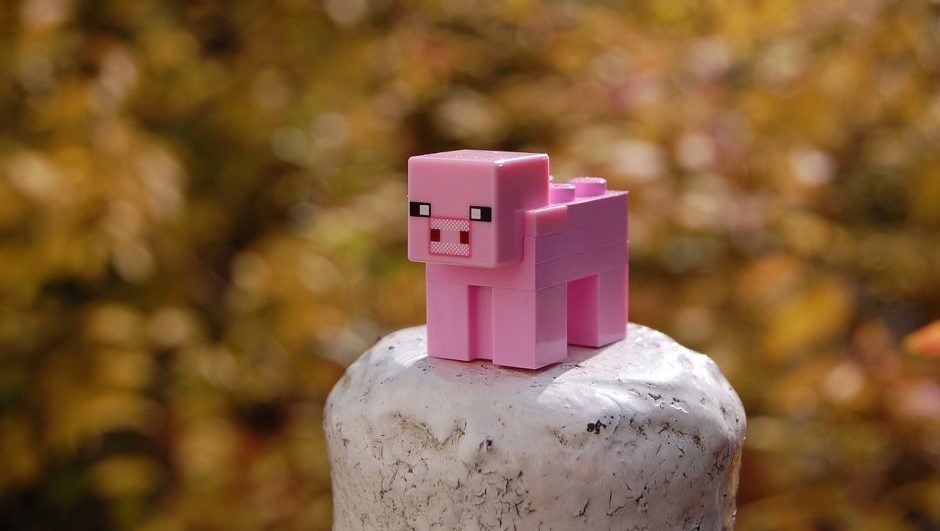
by Stone Marshall | May 18, 2016 | Minecraft News |
Minecraft is an exceptionally popular video game among people of all ages. Its influence reaches far and wide. But for one man in France, Minecraft was much more than just a fun distraction. In fact, it changed the trajectory of their business goals. They were able to leverage their addiction to the game into a profitable business model. The story of how a video game development business missed its mark, but was replaced by a lucrative Minecraft hosting service is one you are not going to want to miss out on.
Funding a Passion
James Copeland had a passion for playing video games. So much so, that he dreamed of developing and marketing his own video games. However, before he could make a mark in the world of game development, his company had to get funding.
In order to make this happen, he started a side venture hosting servers for Minecraft gamers called GGServers. As it turns out, this became more profitable than he could’ve imagined, and is now his main focus.
Following Success
When Minecraft was released, it became an instant success. That popularity and growth shows no signs of slowing any time soon. In fact, if nothing else, the popularity of the game (and its related merchandising) is growing exponentially. Growing along with that is Copeland’s venture.
The company has been in operation since 2013 with data centers now located in Montreal, Paris, Chicago, Los Angeles, Kansas, Las Vegas and Prague.
About Minecraft
Minecraft is known as a sandbox game. It has an audience of nearly 20 million active players. It was developed and released by the Swedish company Mojang, which has since been acquired by Microsoft. Players of Minecraft explore virtual realms in the game, but must also gather the materials required to build shelter before nighttime.
Minecraft servers, like the ones hosted by GGServers, give players the ability to engage one another in a multiplayer version of the game. Using hosting services allows players to leave and re-enter the game, so when they turn off their personal devices, they won’t disrupting the gameplay of others.
Monetizing Information
Business owners who are willing to invest money in computer equipment can turn it into a money-making opportunity by renting out server space to teams of players who don’t wish to maintain their own servers. Other games such as World of Warcraft and Call of Duty work the same way. GGServers now rent out servers in 8 locations worldwide with around 10,000 to 12,000 virtual servers online at any given time.
Of course, owning the servers is just the first step. Players count on reliability. If the servers are not properly maintained, and outages become an issue, people will quickly find another hosting service.
Why Minecraft?
As mentioned above, this all started in order to fund the development of a browser based video game. However, Copeland’s entry into hosting servers for Minecraft could not have been timed any better. He started their hosting business in 2013. This also happened to be the year that Minecraft’s popularity absolutely skyrocketed.
The profits became the driving factor behind the decision to make hosting the company’s focus. Copeland decided to play on the “affordability” factor and prove that cheap doesn’t always stand for “low-cost” thus expanding his user-base rapidly to a few thousands in the first year of operations.
GGServers: How a Minecraft Addiction Led to Profit
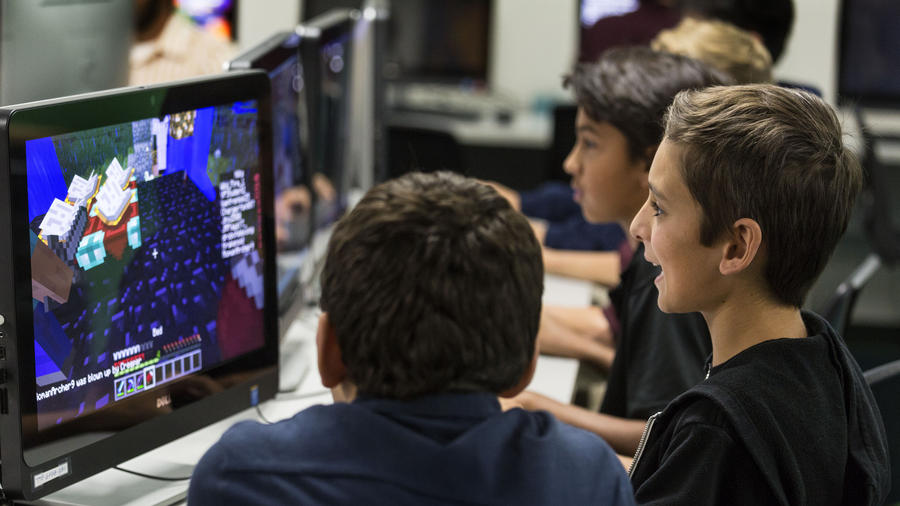
by Stone Marshall | May 17, 2016 | Minecraft News |
Seventh-grader Brayden Foxhoven hurries to finish his chicken fingers. He has bases to capture. Gems to collect. Viewers to entertain.
And he knows better than to break the cardinal rule of playing video games at middle school: Don’t spill your lunch on the keyboard.
Foxhoven and his Viewpoint School classmates are getting an education in Twitch, the app that lets anyone stream their game play for the world to watch.
This school year, the private school in Calabasas formed a Twitch club — a weekly gathering that has quickly become as popular as established clubs for Spanish speakers and “Harry Potter” fanatics.
Where students who toiled on computers during lunch were once the audiovisual club nerds, Foxhoven and his dark blue Twitch hoodie are among the cool on campus. Even high schoolers are jealous of the lunchtime gaming privilege, which occurs about once a week on the school’s complex bell schedule.
“I didn’t expect people to want to do the club,” Foxhoven said. “I didn’t expect the 25 sign-ups. It was unimaginable.”
The Twitch Club — which the Amazon.com-owned company believes is the first middle school group named in its honor — reflects gaming’s emergence into the mainstream.
“Gamers are leading the cultural vanguard,” said Twitch marketing chief Matthew DiPietro. “The school’s endorsement acknowledges what most people under 35 already know, which is that gaming is a large, integral part of pop culture.”
Foxhoven got the idea in September during the first week of classes when he wore the same Twitch hoodie each day. Some two dozen strangers complimented him over the sweatshirt, gifted by a family friend at the San Francisco firm.
“Cool! You do Twitch? Are you going to make a club?” students would ask him. “I said, ‘Sure why not?’” recalled Foxhoven, 13.
But he faced resistance from school officials, who’d never heard of Twitch but knew of gaming’s associations with laziness and violent behavior. In a couple of weeks of daily meetings with Foxhoven, they also questioned whether broadcasting online would threaten students’ privacy and safety — not to mention the risk they would be exposed to the kind of bad language that seeps into any online comment section.
A discouraged Foxhoven considered hosting an unofficial, after-school club at his dad’s video production studio.
But Foxhoven offered one last pitch to Casey Dodd, the school official in charge of approving clubs. He showed that 30 students backed him and explained that gaming was core to their lives and aspirations. Dodd loved it.
“We have tons of clubs, but we have a solid five or 10 that gather the most energy and intensity,” Dodd said, placing Twitch Club in that category. “The tech ones are definitely on the up and up.”
Middle schoolers play “Minecraft” or visit streaming video website Twitch during lunch.
Middle schoolers play “Minecraft” or visit streaming video website Twitch during lunch. (Ricardo DeAratanha / Los Angeles Times)
The Twitch Club launched in the early fall, but with live-streaming shelved until administrators could get more comfortable with the idea.
At a November meeting, 16 students grabbed a spot along rows of Dell all-in-one computers. Some played “Minecraft” together. Others did individual drills in the building game, where players collect resources used to construct or destroy elaborate virtual environments in a set-up often compared with a digital version of Lego.
The club environment provides quick access to tips from peers on how to cultivate a bigger following on Twitch, said seventh-grader Riley Sockwell. But as the 30-minute gaming session came to a close, Sockwell mostly lauded the club for the “awesome” achievement of making it OK to game at school.
By January, administrators cleared the club to go live online. Foxhoven, having streamed several times before from home with his dad’s OK, was the natural star.
Watch live video from Jinx2500 on www.twitch.tv
He remained calm throughout one of the club’s initial streams, providing commentary about his actions in the “Minecraft” universe as energetic students barked commands over him. The 32-minute broadcast allowed viewers to see both a webcam feed of Foxhoven’s face and watch his character’s moves in games of paintball, capture-the-bases and more.
It’s not always easy to follow. The group’s language can be unrecognizable to outsiders, with utterances including “I’m going to save 4,000 gems to get the diamond ax” and “Get me the melon launcher.”
And there are quick jumps in thinking. As Foxhoven explained his gaming strategy, he also responded to viewers’ written comments.
People asked how to get a job at Twitch (“send in a resume”), whether the kids were broadcasting from school (“yes, we’re at school”) and if he got an A+ in Twitch (“yup.”)
For a few minutes, the club had more viewers — eight — than people in the classroom — four. (Projects had waylaid many of the students in the usual group of 20.) But Foxhoven and company were unfazed as viewership swelled to more than 100 after Twitch linked to the stream on its social media pages. They felt the love though.
“Wish I had this in school,” a user with the screen name double0lemon wrote on a chat alongside the video stream.
Of course, several viewers spoke excitedly about Foxhoven’s Twitch hoodie, which he said he wears just about everyday if it’s not in the laundry machine.
Foxhoven said other feedback has come privately, including when a stranger he battled online said watching the stream brightened his attitude on a bad day.
“It just shows what we’re doing means something to people,” Foxhoven said.
His dad is happy that he’s learning how to make compelling videos, involve schoolmates in the process and communicate with people worldwide.
“That thought process for a 13-year-old to have that influence so wide, it’s pretty cool,” said Brad Foxhoven, who works with video game makers, advertisers like Mountain Dew and movie studios on events, games and productions.
Viewpoint School students began regularly broadcasting on Twitch from a classroom earlier this year.
Viewpoint School students began regularly broadcasting on Twitch from a classroom earlier this year. (Ricardo DeAratanha / Los Angeles Times)
Though colleges have long been a hotbed for video gaming clubs, high schools and middle schools are new ground. Viewpoint computer science teacher David Martin expects campus gaming to spread, comparing Twitch Club to the radio club of old — but with many more participants.
“The shop courses we grew up with are now computer-type courses,” said Martin, who advises the club and sits in on meetings. “I’m the modern-day shop teacher.”
With Martin on watch, parental waivers weren’t required for students to Twitch, Brad Foxhoven said. But parents do support the club.
If broadcasting is poised to become as natural as writing in the online video era, then learning how to play and commentate simultaneously is a valuable skill in the mind of Debbie Fisher, who fosters balance by having her son Jaden, 13, read or spend time outside when at the family’s Malibu ranch.
“The world is changing rapidly, and it’s a great forum for him to learn about the new technology,” Fisher said.
Twitch hopes to promote the Viewpoint School’s stream again if it continues do well. But it doesn’t have broader plans to specifically draw more 13- to 17-years-olds, who represent about 15% of users, according to data from research firm ComScore. About a third of Twitch users are of college age.
Foxhoven’s generation is eager to follow in the footsteps of those video-game celebrities in their 20s who’ve turned online video stardom into a career.
He’ll be getting a test run soon. His club is soliciting donations through its Twitch page, which is customary on the service, Foxhoven said. He’d buy a better microphone in addition to “Minecraft” toys to use as prizes for an internal tournament.
Foxhoven, who’s also in clubs for drones and soccer, hasn’t set specific Twitch Club goals, but he’d be “energetic” if his group hit 1,000 concurrent viewers next school year, he said. There’s also hope of being allowed to play “League of Legends,” a more violent game.
It might take some persuading, but now it’s not just friends on his side. There are also the viewers.
Math. Science. Recess. Minecraft? Twitch club brings gaming to school
